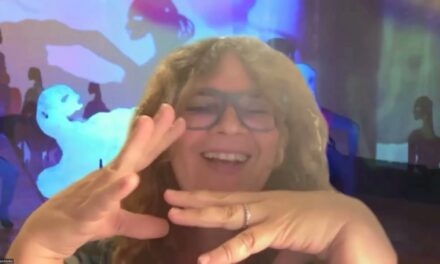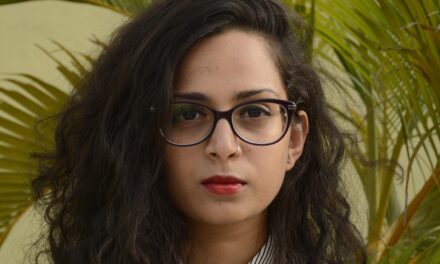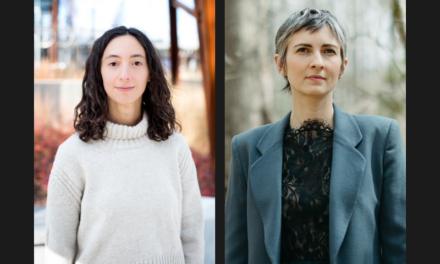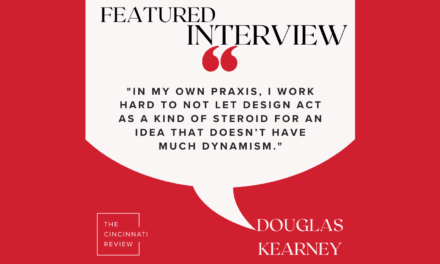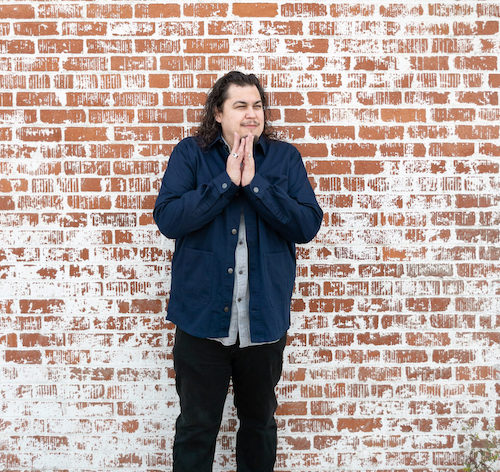
Assistant Editor Holli Carrell: I first encountered Anthony Cody’s writing in a graduate seminar course here at UC led by poet and UC professor Felicia Zamora. Reading Borderland Apocrypha (Omnidawn, 2020) wholly altered my understanding of how a poet might engage with history and documentation in their work and what a poem might accomplish on and off the page. Whether using erasure against the 1848 Treaty of Guadalupe Hidalgo to unearth the state-sanctioned violence inflicted upon communities of color in the borderlands or dismantling images from the Dust Bowl to interrogate climate collapse and our current environmental predicament, Anthony Cody’s work is some of the most innovative, urgent, and provoking I’ve ever encountered. Naturally, I was thrilled when I learned that Cody would be visiting UC as part of the Creative Writing Program’s annual Visiting Writers Series and jumped at the opportunity to speak with him a little about his new poetry collection, The Rendering (Omnidawn, 2023), his creative process, and upcoming projects.
If you’re in the Cincinnati area next week, don’t miss Anthony Cody’s events at the Elliston Library at the University of Cincinnati on October 24th and 25th.
Hi Anthony! Thank you so much for taking the time to speak with us. Can you share a little about the genesis of your new poetry collection, The Rendering? You have lineage in the Bracero Program and the Dust Bowl. Did you always know you wanted to write about these histories and subjects?
I find myself grasping toward my two lineages and finding parallels, which would seem disparate when one is of Mexican and Irish ancestry. However, the more I dig and disentangle, the more I can see that they are linked in their displacement, socioeconomic status, and historical othering in the project of creating (and colonizing) the American sense of the West. I never anticipated writing about both, and in many ways, I resisted writing about whiteness, my own included, for years. Yet, in that need to understand myself and the moments that we now exist in, the work arrived.
A more specific moment on the beginnings of The Rendering would be driving across the country several years ago. Specifically, through areas that my paternal grandparents fled from in Oklahoma during the Dust Bowl. I wrote a few things down, but I was perhaps a year from finishing my first book, and had to put that aside before diving back into those moments several years after that drive. So much felt trapped in time, and I could not help but thinking, from the removal of the indigenous populations to the destruction of the topsoil to the still recovering land and commerce, we did this, we do this, and we will do this again.
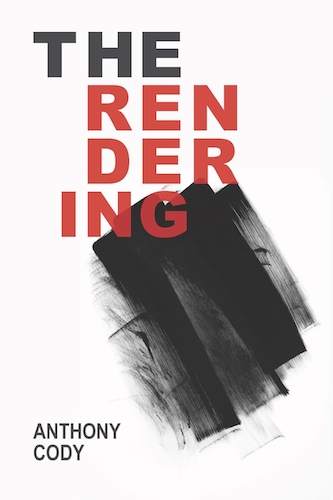
Borderland Apocrypha and The Rendering deconstruct and transform public documents housed in digital and physical archives (such as images, audio recordings, legal documents, artifacts, etc.) to unearth acts of violence inflicted on people and the land by settler colonialism and capitalism. I wonder if you can tell us a little about your research process? How do you determine which documents to work with?
My research process veers into obsession and compulsion. All things in my life, or within the present, refract through that research. I am unsure if I am good company when I am in this mode of research and writing. I tell this story again and again, but a friend once made the joke that I do not send text messages, I send homework. Of course, they said this in jest, but in a way it is true. In the moments in which all I am seeing is archive and poetry the day-to-day (recreation and interpersonal relationships) suddenly becomes consumed with the project, the research, and the continued consumption of all data, information, social media, television, music, archive, art, and the natural world that could be tangentially related to the project I am trying to dig my way toward understanding. Ultimately, there becomes this give and take with the research, to keep consuming until the writing arrives, and when the writing dwindles, I return to the archives.
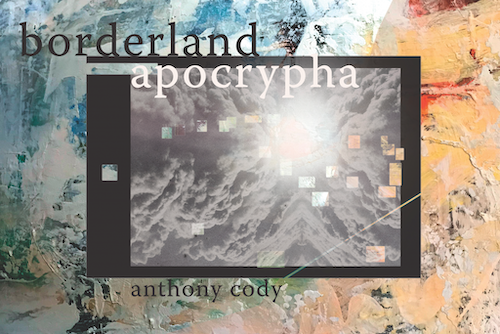
In The Rendering, there are many moments when you gently guide readers toward participation with the book’s subjects and concerns beyond the printed page. I’m thinking specifically of “Nothing but a Margin, but a Yield” which uses QR codes to invite readers to either project a muralpoem on their wall or print out the “disassembled muralpoem and annihilation strategies” as a double-sided deck. Can you talk a little about the creation of this piece?
Around 2016, I had the realization that one of the biggest impediments for my own writing and creative practice was how I approached the page and the field of the page, and this steadily escalated into abandoning the 8.5” x 11” page and exploring visual ruptures and larger scale areas on which to write. I found myself feeling more expressive, while also beginning to seek out more modalities and opportunities to invite readers to engage with the work. These also became opportunities in which readers could re-enact or vivify the archive or the experience of the archive and the inquiry, a way to slow down amid the speed of all the things happening in our current internet-driven age, to slow and commit to a newer, deeper memory. This became vital in completing my first book and then diving into The Rendering.
The aforementioned poems became opportunities to not only take the poems out of the book, but also to take them into spaces that are not typically perceived as spaces for poems, like projected on the side of a building, or printed and assembled by the reader. This creates something more participatory, while also thinking through our own consumption and complicity amid climate collapse.
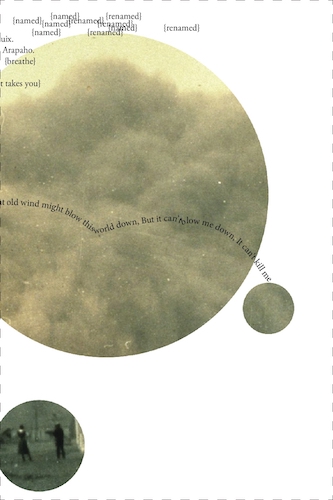
How does collaboration inform your artistic practice? In your piece, “HomeHumanMachineFailureSpiral” on the Harriet blog, I read that portion of The Rendering began as a collaboration with Juan Felipe Herrera during the early pandemic. Were there other people/books/sources you drew from for inspiration and guidance while writing this collection?
I see docupoetics as its own type of collaboration as much of the work is in direct conversation with the archives of the Dust Bowl and climate collapse, which would include Dorothea Lange, Woody Guthrie, and the United Nations’ Intergovernmental Panel on Climate Change. These archives also help inform and guide the form of the poems and navigation of the field of the page. Other guidance includes the work of Muriel Rukeyser, Jean-Michel Basquiat, Carlos Oquendo de Amat, Maya codices, and conversations (in addition to my conversations with Juan Felipe Herrera on invented forms) with Douglas Kearney, Farid Matuk, giovanni singleton, Carmen Giménez (including her Harriet blog piece on “extrapoetics”), Bernardo Palombo, and my partner, Mai Der Vang.
What kinds of things have been feeding your creative side lately (books, TV, film, natural things, people, etc.)?
I feel as though people continue to help ground me in my creativity (the aforementioned folks, plus a host of Fresno poets and my Noemi Press colleagues Suzi F. Garcia and Sarah Gzemski), particularly given the many upheavals and losses we have had to collectively experience since the 2016 election and COVID-19 pandemic. Which is to say, I don’t know if I have felt creative in quite some time, but a constellation of community has helped me stay afloat and reminds me that creativity can still exist. Mentoring my students at Randolph College’s Low Residency and the Laureate Lab Visual Wordist Studio and helping bring new books into the world via Omnidawn and Noemi Press has been energizing. To know that one is not alone in poetry, but that there are new generations and countless hearts already making space and work that is transformative compels me to push myself.
The most restorative moments over the last several years have been taking long walks with my partner. We notice the birds and their migrations, talk about poems, develop ideas for creative projects, and ever so often, have the audacity to think about a life larger than anything I could have imagined alone and living in Fresno.
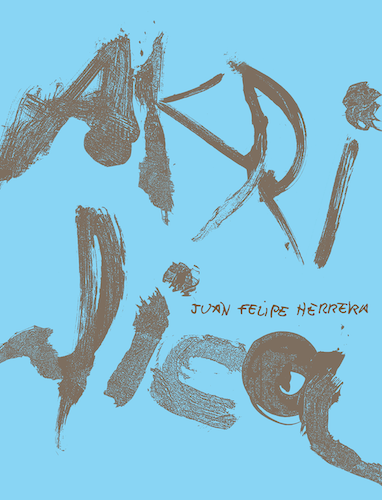
If you feel comfortable discussing it, can you tell us a little about what you’re working on now?
Since the start of the pandemic, I’ve published two books, co-edited/co-translated Juan Felipe Herrera’s Akrilica (and helped curate two exhibits around his visual archive), book/text designed a children’s book with Juan Felipe Herrera and Alfonso Salazar, became a poetry editor for Omnidawn, began teaching at Randolph College, and became co-publisher of Noemi Press. I write it all down to give myself a bit of grace to also say that at the moment my new work has slowed considerably, but this is so that I can honor and nurture the publication of The Rendering, my role as co-publisher of Noemi Press, as educator with Randolph College, and ground myself in my home life and all that I must nourish to meet things anew. I know the new project, which I believe will be around growing up in Fresno, CA just off a highway off-ramp in a collapsed industrial area, will arrive as I continue to listen and prepare myself for when the writing and research, finally spark.
Anthony Cody is the author of Borderland Apocrypha (Omnidawn, 2020), winner of the 2018 Omnidawn Open Book Contest selected by Mei-mei Berssenbrugge, and The Rendering (Omnidawn, 2023). He is a 2022 Whiting winner, 2021 American Book Award winner, a 2020 Poets & Writers debut poet and a 2020 Southwest Book Award winner. Borderland Apocrypha was named a finalist for the National Book Award in Poetry, the PEN America / Jean Stein Book Award, the California Book Award, the LA Times Book Award in Poetry, as well as longlisted for The Believer Magazine 2020 Editor’s Award in Poetry. A CantoMundo fellow from Fresno, California, Anthony has lineage in the Bracero Program and the Dust Bowl. He co-edited How Do I Begin?: A Hmong American Literary Anthology (Heyday, 2011), as well as co-edited and co-translated Juan Felipe Herrera’s Akrílica (Noemi Press, 2022). Anthony has taught ecopoetry at Fresno State, and has read, lectured, and led workshops across the country. He serves as a co-publisher of Noemi Press, a poetry editor for Omnidawn, a collaborator with Juan Felipe Herrera and the Laureate Lab Visual Wordist Studio, and is faculty in poetry at Randolph College‘s Low Residency MFA Program.


